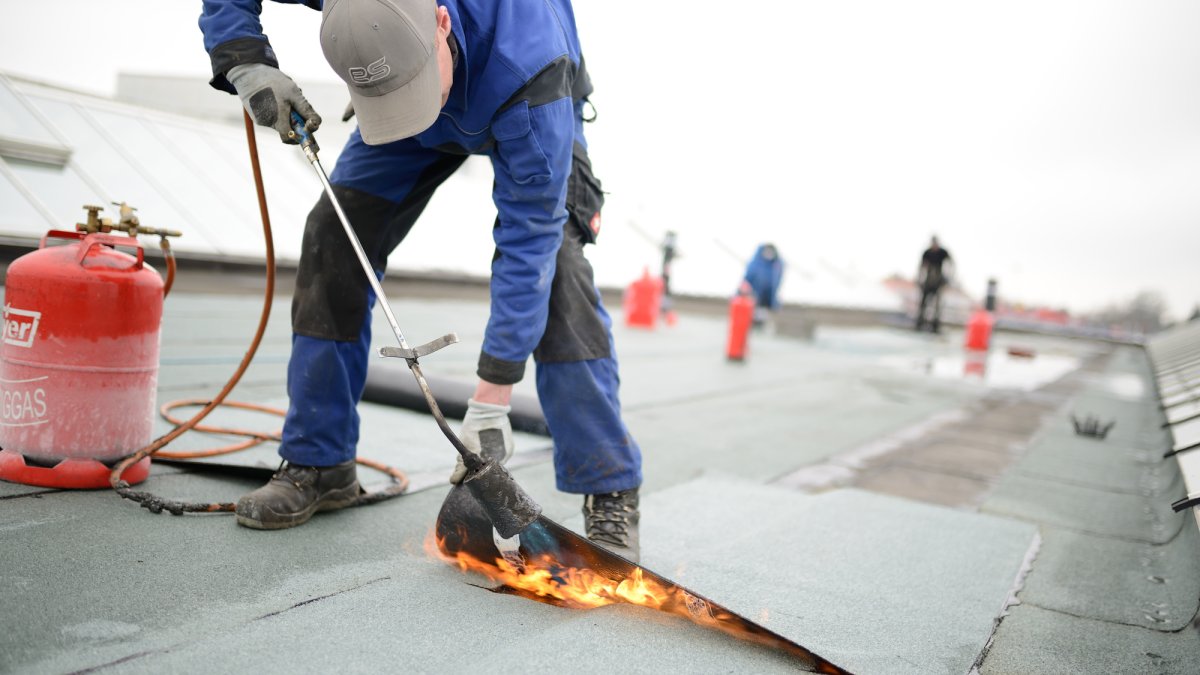
Industrial roofing systems are far more varied than those used for residential properties. They have to be, given the diverse range of needs businesses and industries have—from factories that emit high temperatures to cold storage units that must remain frigid. For businesses in Southern California, understanding the different types of industrial roofing can be especially crucial, given the unique weather conditions of the region. In this article, we’ll delve into the various types of industrial roofing, focusing particularly on those best suited for the climatic challenges of areas like Los Angeles.
1. Built-Up Roofing (BUR)
Description: Built-up roofing, often referred to as BUR, is one of the oldest and most durable industrial roofing types available. It is made up of alternating layers of bitumen (asphalt or coal tar) and reinforcing fabrics. The layers create a finished membrane.
Benefits:
- Long-lasting with a lifespan of up to 30 years.
- Provides excellent waterproofing and UV protection.
- Suited for flat or low-sloped roofs, which is common in industrial settings.
2. Modified Bitumen Roofing
Description: Modified bitumen roofing is an evolution of BUR. It incorporates modifiers into asphalt to give it rubber or plastic-like properties. It usually comes in rolls and can be applied in various ways including torch application, cold applied, or self-adhered.
Benefits:
- Improved flexibility compared to BUR.
- High resistance to extreme temperatures, making it suitable for places with temperature variations like Industrial Roofing in Los Angeles.
- Resistant to tears and punctures.
3. Thermoset (EPDM) Roofing
Description: EPDM, or ethylene propylene diene terpolymer, is a durable rubber roofing solution.
Benefits:
- Highly resistant to UV rays, ozone, and weathering.
- Typically black but can be coated white to reflect sunlight and reduce cooling costs, a key feature for Industrial Roofing in Los Angeles.
- Easy maintenance and repair.
4. Thermoplastic (PVC & TPO) Roofing
Description: Thermoplastic roofing solutions, including PVC (polyvinyl chloride) and TPO (thermoplastic olefin), are among the fastest-growing commercial roofing products.
Benefits:
- UV resistant and highly reflective.
- Resistant to chemicals, oils, and animal fats—ideal for manufacturing plants or restaurants.
- Durable and long-lasting with a lifespan that can exceed 20 years.
5. Metal Roofing
Description: Metal roofing for industries usually includes systems made from aluminum, steel, stainless steel, or copper.
Benefits:
- Incredible lifespan, with some systems lasting 50 years or more.
- Can be treated to be rustproof and increase reflection to reduce energy costs.
- Can withstand high winds, making them suitable for places prone to storms.
6. Green (Living) Roofing
Description: Green roofs are flat roofs covered with vegetation over a waterproofing membrane. They’re more than just a trend, offering both aesthetic and practical benefits.
Benefits:
- Act as insulators, reducing the cost of heating and cooling.
- Absorb rainwater, which can be beneficial in managing stormwater in urban areas.
- Enhance the building’s aesthetic and can even be used for gardening or as recreational space.
7. Solar Roofing
Description: Solar roofs, as the name suggests, incorporate solar panels either as a part of the roof itself or installed atop an existing roofing system.
Benefits:
- Generate electricity, potentially reducing or eliminating electricity bills.
- Can be combined with other roofing systems.
- Offer tax credits and other incentives in many regions.
Conclusion
For businesses situated in locales like Los Angeles, choosing the right type of industrial roofing is not just about durability or cost. With ever-increasing energy costs and a growing emphasis on sustainability, the roofing choice can influence energy efficiency and environmental impact. Industrial Roofing in Los Angeles, given its unique weather challenges ranging from intense sunlight to occasional heavy rainfall, demands materials that can withstand these conditions while also providing optimal insulation and energy savings.
When considering an industrial roofing type, it’s essential to consider factors like durability, energy efficiency, maintenance, and installation costs. Regardless of the type chosen, regular maintenance and inspections will ensure that the roofing system lasts its intended lifespan, safeguarding the infrastructure and assets it protects
Steven Bennett
Related posts
Stay connected
Today's pick
- Things to Remember While Designing Your Custom Modular Kitchen in GurgaonGurgaon now known as Gurugram is the second largest city in the state of Haryana and is a reflectiossn of an ideal modern city with futuristic goals. Witnessing rapid urbanization, it has also emerged as a hub for contemporary homes, with homeowners seeking innovative and... The post Things to Remember While Designing Your Custom Modular […]

